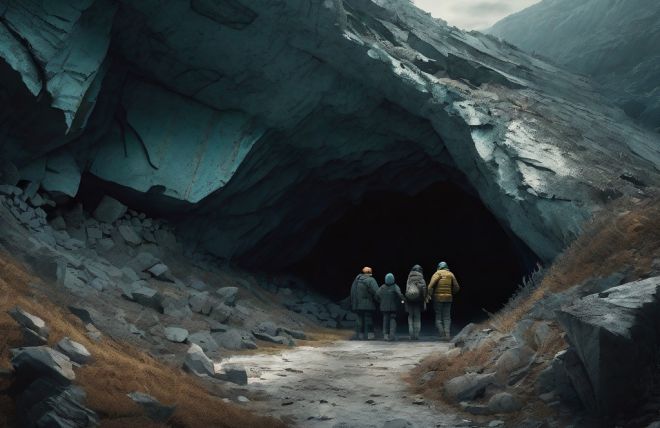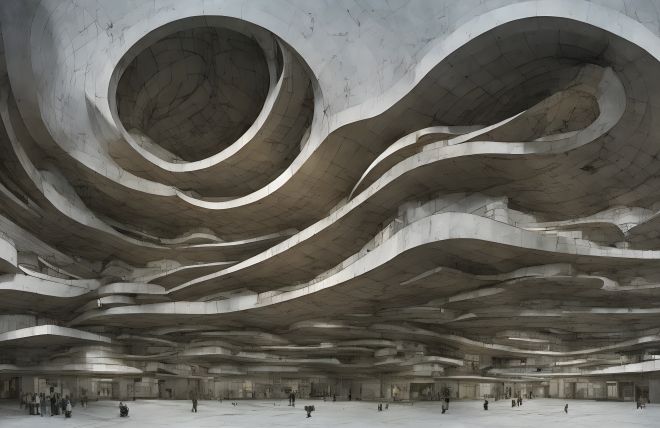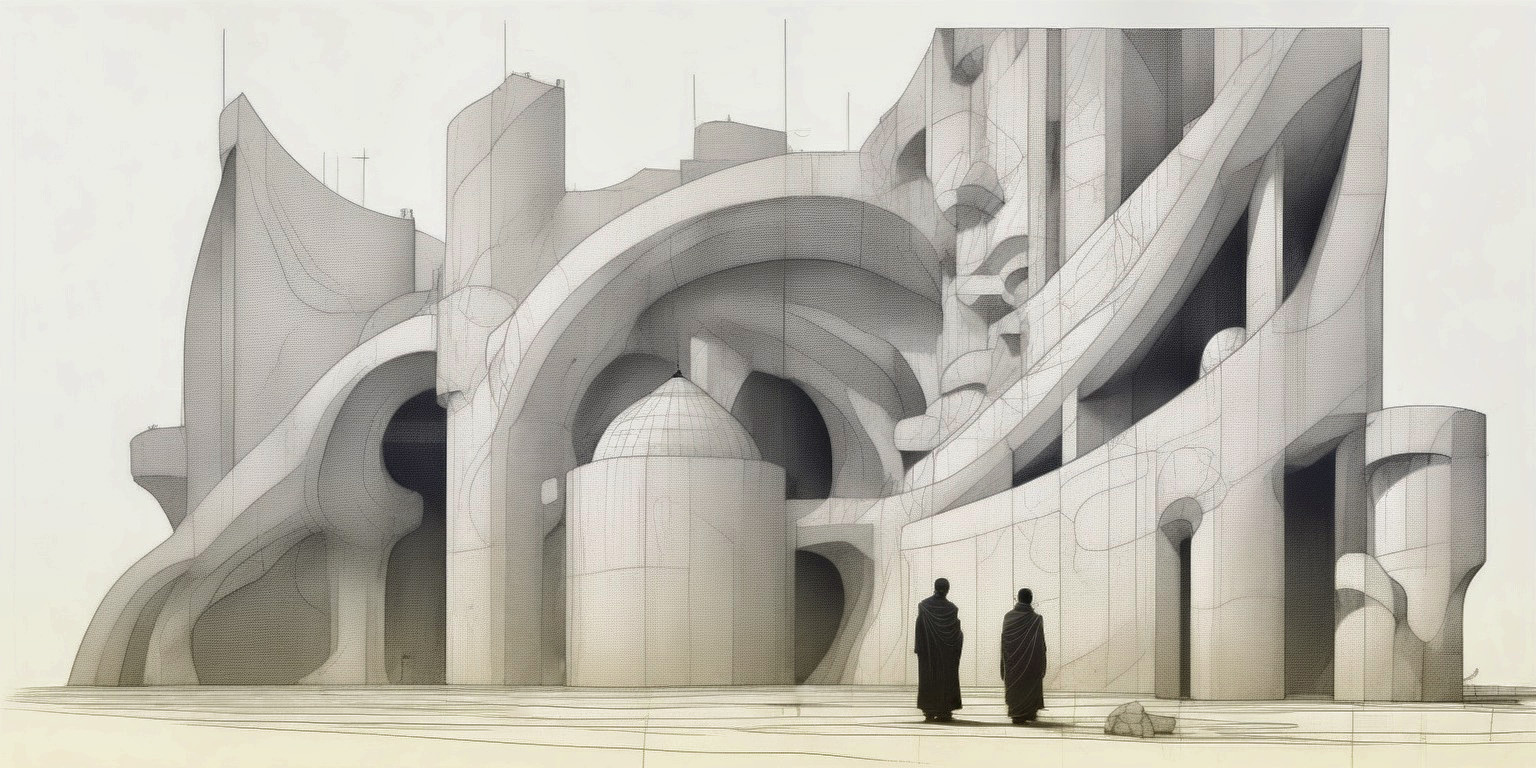
In a time not marked by the relentless march of modern clocks, in a land where the ancient forests whispered secrets of the old world, the Abbey of Saint Quiteria stood as a solitary testament to time-honored traditions and divine mysteries. Nestled among rolling verdant hills, its stone walls and towering spires were cradled by the arms of nature, hidden from the prying eyes of the outside world. It was in this serene solitude that the monks of Saint Quiteria devoted their lives to spiritual pursuits and the mastery of an art unlike any other—the brewing of a unique beer imbued with hallucinogenic herbs, the secrets of which were as old as the abbey itself.
This sacred brew was no ordinary beverage. Crafted from an ancient recipe, it contained rare herbs that could only be found in the untouched wilderness surrounding the abbey. The monks believed these herbs were a gift from Saint Quiteria herself, meant to open the minds of those who drank the beer and bring them closer to the divine. Pilgrims and seekers of enlightenment traveled great distances, drawn by tales of a mystical liquid that could induce visions of heavenly realms and profound spiritual awakening.
Life at the abbey was a harmonious blend of prayer, meditation, and the meticulous crafting of their holy brew. Days were marked not by hours but by the rhythm of spiritual practices and the brewing cycle. The monks took great pride in their work, viewing each batch as a sacred offering to both their patron saint and those who sought their beer in search of higher truths.
As the sun dipped below the horizon on a day like any other, the monks gathered in the refectory, their hearts and minds at peace, unaware that the morrow would bring a trial of faith and change the course of their lives forever.
The Abbey of Saint Quiteria had stood for centuries, a beacon of faith and mystical tradition. Its daily cadence was a gentle, unbroken melody — until the night the melody faltered, and disaster struck with ferocious intensity. It was a night cloaked in the kind of darkness that seemed to swallow the light, a premonition that the monks, in their unwavering routine of evening prayers and meditations, failed to heed.
The fire started as a whisper, a flicker unnoticed in the bowels of the brewery where the sacred brew was birthed. Perhaps it was an errant spark that kissed the dry, ancient wood, or maybe it was fate itself igniting the flame. Whatever its origin, the fire grew with a voracious appetite, fed by the timbers and storied texts of the abbey, until it roared through the corridors like a beast unleashed.
Alarms rang out in the form of bellows and the clamor of feet on stone. The monks, roused from their chambers, faced the inferno with a mix of bravery and desperation. Buckets of water arced through the air, a futile defense against the blaze that consumed their home, their history, and their heart. Amidst the chaos, the sacred recipe, the very soul of their order, was secured — a small victory in the face of impending loss.
By dawn, the fire had consumed the abbey, leaving only smoldering ruins and the acrid scent of ashes where once stood a sanctuary of peace and spiritual pursuit. The monks, huddled together in the cold light of morning, gazed upon the devastation, their hearts heavy with grief. The abbey, their haven and holy site, was no more.
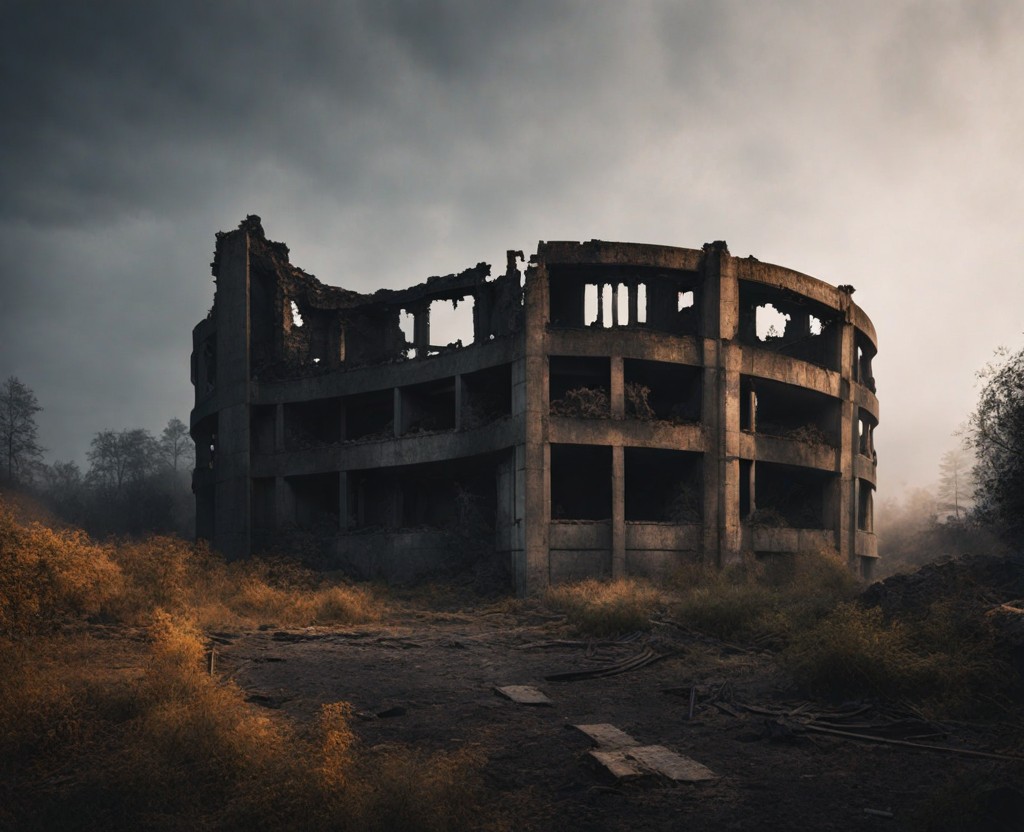
In the weeks that followed, the cause of the fire remained a mystery. Some whispered of divine retribution; others spoke of accidental tragedy. But for the monks, the cause mattered less than the loss itself. The brewery, their labor of love and divine connection, was lost to the flames, the sacred brew with it.
As the world beyond the abbey's ruins learned of the tragedy, sympathy and speculation flowed in equal measure. The monks, however, found themselves at a crossroads. With their home gone, the path forward was uncertain. Yet, in their hearts, the flame of their faith and the legacy of Saint Quiteria’s brew remained alight, a beacon guiding them towards an unknown destiny.
In the aftermath of the fire, the monks of Saint Quiteria found themselves adrift in a world that felt both vast and vacant. The ruins of their beloved abbey lay behind them, a scar upon the earth that mirrored the wounds in their hearts. Yet, with the sacred recipe safeguarded amongst their few possessions, they embarked on a journey into the unknown, guided by faith and the lingering hope that their spiritual mission was not yet concluded.
The world outside the abbey's walls was both wondrous and daunting. The monks traversed landscapes that unfurled in endless variation, from verdant valleys whispering with streams to ancient forests that seemed to watch over their passage with a somber stillness. Villages and towns dotted their path, and it was within these bastions of civilization that the monks encountered both the depths of compassion and the heights of curiosity.
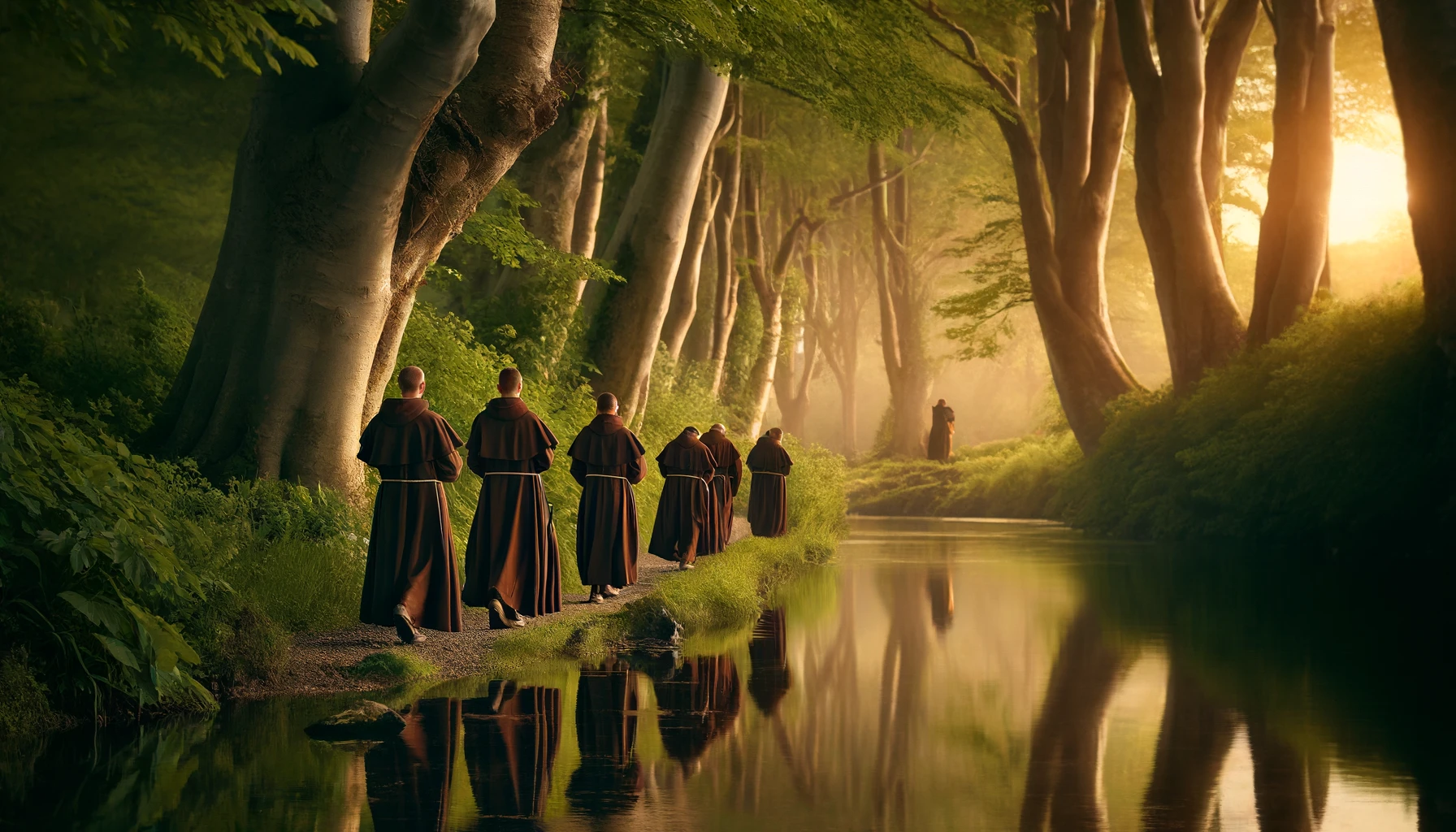
Word of their plight had spread like the very flames that had rendered them homeless. People came forth with offers of food, shelter, and solace, moved by the story of the monks who had lost everything but their faith. Yet, alongside generosity, there was also an insatiable curiosity about the monks' mystical brew, whispers of its legendary effects tantalizing the imaginations of all who heard.
As seasons changed, marking time in a world that seemed timeless, the monks' journey took on the quality of a pilgrimage. They shared their story and the teachings of Saint Quiteria with those they met, and in return, they were enriched by the tapestry of human experience that unfolded before them. Despite their losses, the monks found that their mission — to bring enlightenment through their sacred brew — was far from over; it had merely transformed.
Unexpectedly, their wanderings took a dramatic turn when a courier, bearing the insignia of the Vatican, found them in a modest village at the edge of the known world. The message he carried was nothing short of miraculous: an invitation from the Pope himself, offering refuge and the opportunity to continue their brewing within the sacred walls of the Vatican.
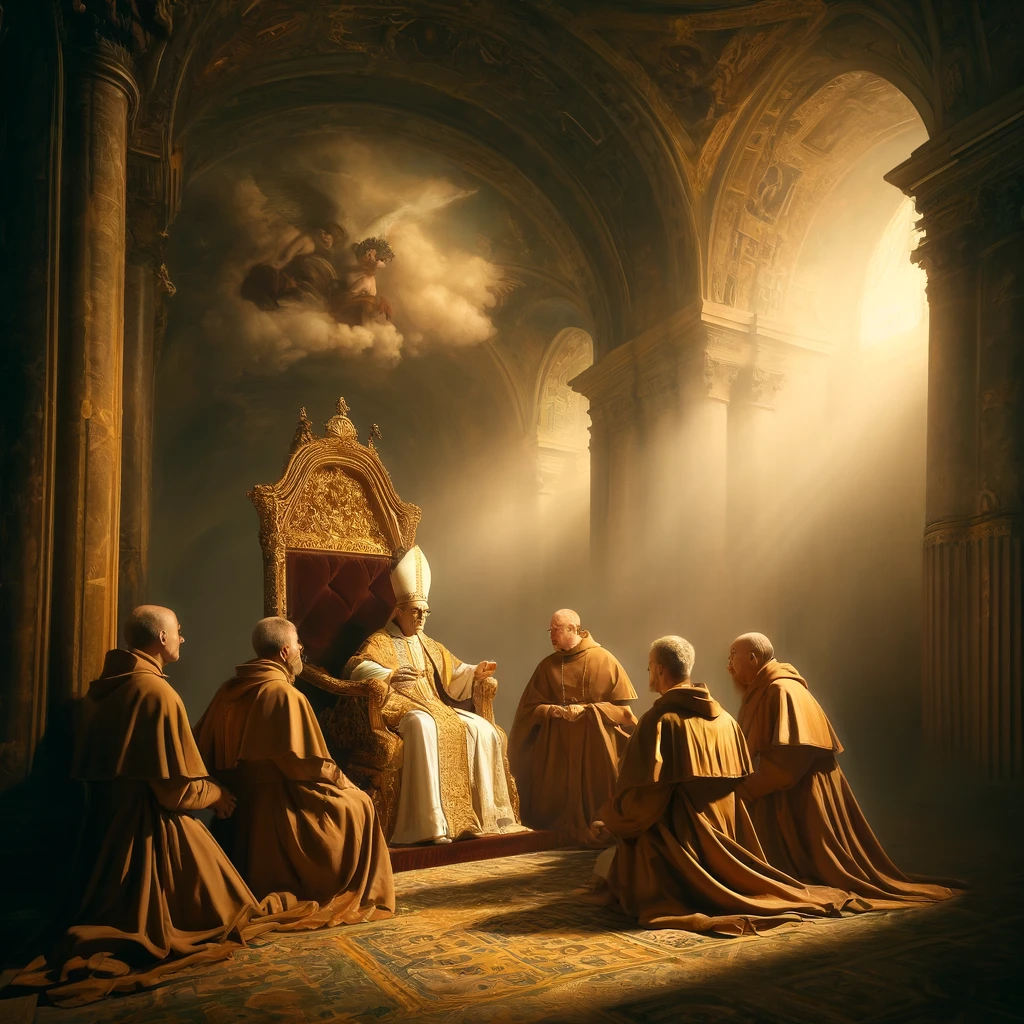 The monks were taken aback by the Pope's interest in their brew and the spiritual visions it induced. The invitation was a beacon of light in their time of darkness, offering not just physical sanctuary but a validation of their sacred work. After much deliberation and prayer, they accepted, seeing it as a divine sign that their journey was destined to take a new, extraordinary path.
The monks were taken aback by the Pope's interest in their brew and the spiritual visions it induced. The invitation was a beacon of light in their time of darkness, offering not just physical sanctuary but a validation of their sacred work. After much deliberation and prayer, they accepted, seeing it as a divine sign that their journey was destined to take a new, extraordinary path.
With renewed purpose, the monks set their sights on Rome, the heart of Christendom, where the next chapter of their saga would unfold. The journey from their shattered past to the looming majesty of the Vatican was fraught with both anticipation and apprehension. What would it mean to brew their sacred beer under the watchful eye of the Church? Was this a test of faith, or a divine mandate to share their mystical visions with the world?
As they approached the Vatican, the monks felt the weight of centuries of faith and history pressing upon them. The Pope's invitation had opened a door to an unprecedented chapter in their order's story, one that promised to intertwine their ancient brew with the future of spirituality itself.
The Vatican’s Proposal
The ancient stones of Rome whispered with the weight of history as the monks of Saint Quiteria made their solemn procession towards the heart of the Vatican. The city was a maze of sacred sites and bustling streets, each turn revealing another layer of its storied past. Yet, for the monks, all roads led to a singular destiny that awaited them within the Vatican's venerable walls.
Upon their arrival, they were greeted with a reverence reserved for those touched by the divine. The Pope, a figure both venerable and enigmatic, awaited them in a secluded garden that bloomed with the tranquility of Eden itself. It was here, under the canopy of ancient trees and the watchful eyes of marble saints, that the monks were offered sanctuary and a proposal that would bridge their ancient traditions with the universal reach of the Church.
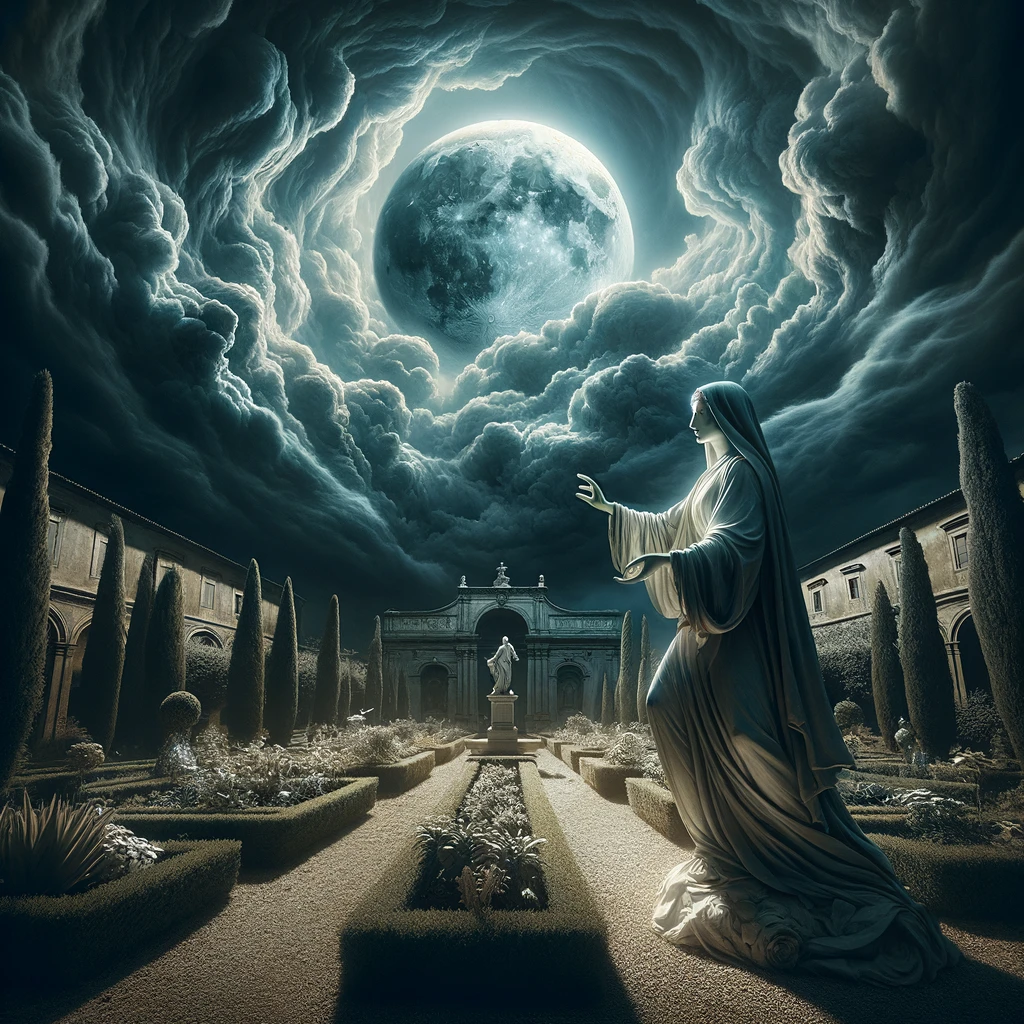 The Pope, having learned of the monks' plight and their unique brew, saw in their journey a confluence of faith and fate. He spoke of a vision that had visited him on a night lit by the same stars under which the abbey had fallen to ash. In this vision, Saint Quiteria herself appeared, her presence as serene as the moonlit garden in which they now stood. She spoke of a darkness that would soon envelop the world, a trial of faith that would test the souls of all. Yet, within this prophecy of doom, there was a beacon of hope: the monks' brew, which had the power to open the minds and hearts of humanity to the divine, guiding them through the impending darkness.
The Pope, having learned of the monks' plight and their unique brew, saw in their journey a confluence of faith and fate. He spoke of a vision that had visited him on a night lit by the same stars under which the abbey had fallen to ash. In this vision, Saint Quiteria herself appeared, her presence as serene as the moonlit garden in which they now stood. She spoke of a darkness that would soon envelop the world, a trial of faith that would test the souls of all. Yet, within this prophecy of doom, there was a beacon of hope: the monks' brew, which had the power to open the minds and hearts of humanity to the divine, guiding them through the impending darkness.
Moved by the Pope's words and the divine endorsement they seemed to carry, the monks accepted the proposal. They would establish a new brewery within the Vatican, under the patronage of the Pope himself. This unprecedented alliance between their ancient order and the heart of Christianity was a testament to the evolving nature of faith and the power of divine intervention.
The agreement was more than a mere merging of paths; it was a sacred covenant that entrusted the monks with a mission of paramount importance. They were to brew their hallucinogenic beer not just as a ritualistic offering, but as a sacramental tool for enlightenment, to prepare the faithful for the trials to come.
As the monks settled into their new home, the Vatican revealed itself to be a place of profound paradoxes. Here, amidst the opulence of sacred art and the solemnity of ancient rites, the simplicity of the monks' lives and the mysticism of their brew found a new expression. The brewery was set up in a secluded cloister, where the vats and barrels were blessed in a solemn ceremony that echoed with chants and prayers.
The preparation for the first batch of beer under the Vatican's auspices was a melding of science and spirit. The monks approached their task with a reverence that turned each step of the brewing process into a meditative practice. As they mixed the water, barley, and sacred herbs, they infused the brew with their prayers and hopes for the future.
Word of the Vatican's new brewery and its divine mission spread through the corridors of power and the streets of Rome, stirring a mix of anticipation and skepticism. Many were curious about the beer that promised visions of the divine, while others questioned the wisdom of embracing such an unconventional path to enlightenment.
As the day of the first tasting approached, the monks, the Pope, and a select group of cardinals gathered in the shadow of St. Peter's Basilica. The air was thick with expectation as the first drops of the sacred brew were poured into chalices of ancient design.
What followed was a moment of collective transcendence that would forever mark the beginning of a new chapter in the spiritual history of humanity. The beer, imbued with the blessings of the monks and the approval of the Pope, opened the gates to visions that were both awe-inspiring and humbling.
Brewing Under the Vatican
The initiation of the brewery within the Vatican marked the dawn of a new era for the monks of Saint Quiteria. This unexpected chapter in their journey was not just a continuation of their ancient brewing tradition but an elevation of their sacred mission to a divine calling. The corridors and halls of the Vatican, steeped in centuries of religious history, now echoed with the anticipation of the monks’ mystical brew, which promised a glimpse into the divine for those who partook.
The establishment of the brewery was a delicate affair, marrying the austere traditions of the monks with the grandeur and solemnity of the Vatican. The chosen cloister, once a silent witness to the contemplative prayers of countless souls, was transformed into a sanctum of brewing, where the sacred herbs and grains mingled with holy water blessed by the Pope himself. The air, once heavy with the incense of Mass, now carried the earthy fragrance of brewing, a testament to the evolving nature of divine worship.
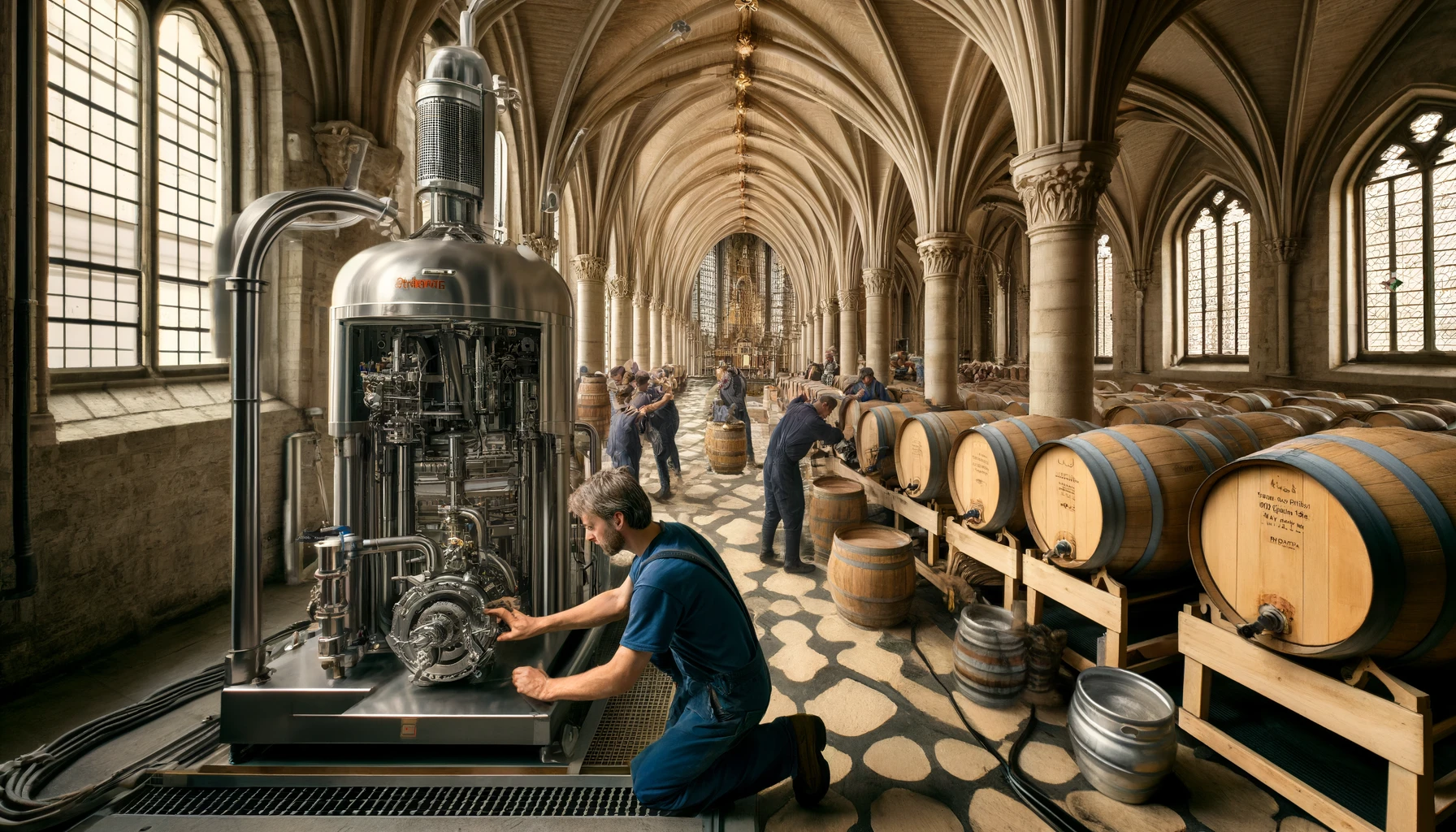
The monks, with their habits as their armor and faith as their guide, approached the task with a reverence born of centuries of tradition. Each step of the brewing process was infused with prayers and chants, turning the act of brewing into a ritual that transcended the mere creation of a beverage. The sacred herbs, whispered to be a gift from Saint Quiteria herself, were handled with a reverence reserved for holy relics, their hallucinogenic properties a bridge between the earthly and the divine.
As the first batch of beer took shape, fermenting in the sanctified vats, a sense of anticipation gripped the Vatican. The upcoming tasting was to be a ceremony of profound spiritual significance, attended by the Pope, his cardinals, and a select few who were deemed ready to experience the visions promised by the brew. The event was shrouded in secrecy, its preparations a blend of ecclesiastical ceremony and the mystical practices of the monks.
On the day of the tasting, the cloister was transformed into a sacred space that seemed to stand at the threshold of heaven and earth. Stained glass windows cast ethereal light upon the gathered assembly, painting their robes in hues of gold and crimson. The air was heavy with the scent of incense and the unspoken anticipation of the divine revelations to come.
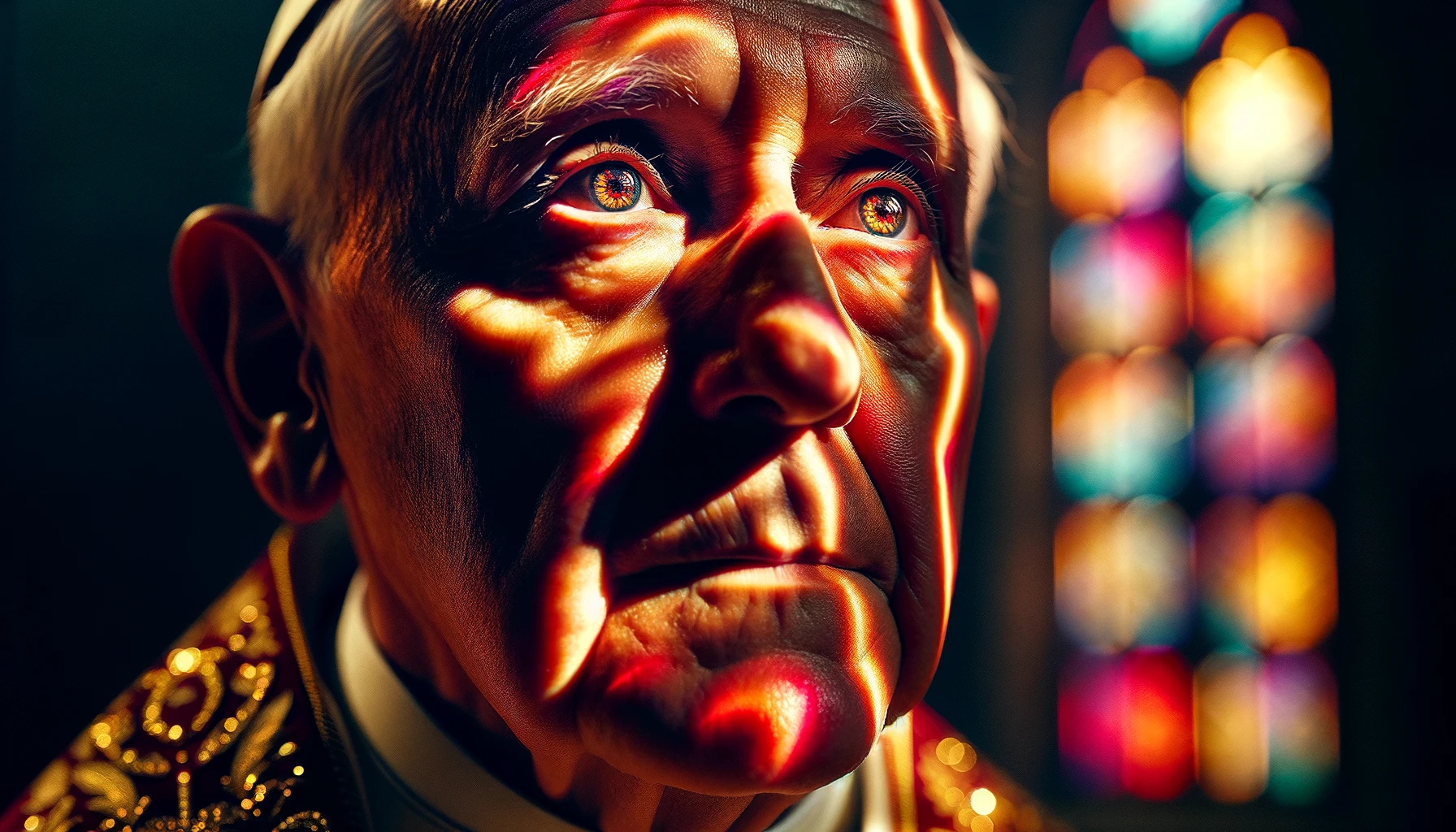
The Pope, a figure of serene authority, led the ceremony with words that spoke of the journey of faith and the endless quest for divine understanding. As the monks presented the chalices of their brew, the assembly partook with a solemnity that belied the profound uncertainty of what was to come.
The effect of the beer was immediate and transcendent. Visions filled the space, not with the hallucinatory vividness of dreams, but with the clarity of divine revelation. The participants saw the world not as it was, but as it could be—a tapestry of faith, love, and understanding, unmarred by the divisions of doctrine and dogma.
Among the visions, a recurring motif emerged: Saint Quiteria herself, guiding the assembly through the challenges that lay ahead. She spoke not with words, but with the profound understanding that filled their hearts, a message of hope and endurance in the face of the approaching darkness.
The ceremony concluded not with the end of the visions, but with the beginning of a collective awakening. The participants emerged from the cloister not as they had entered, but transformed by the experience, their faith deepened and their resolve strengthened.
Divine Revelation and New Purpose
In the wake of the extraordinary tasting ceremony under the Vatican, a profound silence enveloped the cloister, a stillness that spoke volumes. The monks of Saint Quiteria, along with the Pope and the select few who had shared in the sacred brew, found themselves in a state of reflective introspection, touched by the divine revelations that had unfolded before their very eyes. The visions, far from being mere phantasms of the mind, were interpreted as celestial guidance, a divine mandate for the monks and the Church at large.
The recurring vision of Saint Quiteria, serene and resolute, became the focal point of this newfound purpose. Her presence among them, though ethereal, was as real as the stones of the Vatican, imparting a sense of urgency and clarity. She had revealed a path through the looming darkness, a beacon of hope that the monks were now entrusted to carry forth. This was no longer just about the preservation of an ancient brewing tradition; it was a call to arms in the spiritual battle to come.
The Pope, moved by the clarity of the divine message, convened a council to interpret and strategize the path forward. It was unprecedented, the highest echelons of the Church guided by the mystical experiences induced by a brew. Yet, there was a unanimous recognition that traditional approaches were insufficient for the trials prophesied. The brew, and the visions it induced, were to be the catalyst for a spiritual awakening across Christendom and beyond.
The monks were given a new home within the Vatican, a testament to their central role in this divine strategy. They established a larger brewery, combining their ancient practices with the resources and reach of the Church. The sacred brew was to be distributed to the faithful across the world, prepared not just by the monks but by selected clergy trained in the mystical brewing process.
As news of the Vatican's endorsement of the brew spread, it ignited a firestorm of intrigue, skepticism, and fervent belief. Pilgrims from all corners of the earth began making their way to Rome, drawn by the promise of enlightenment and divine vision. The monks, once isolated in their devotion, found themselves at the center of a spiritual renaissance, their brew a sacrament for the new age.
In the months that followed, testimonies of visions and transformations multiplied. The brew was not inducing mere hallucinations but opening the eyes of the soul to a deeper understanding of the divine and the interconnectedness of all creation. People spoke of personal revelations, of barriers broken down, and of a renewed sense of purpose in the face of an increasingly fractured world.
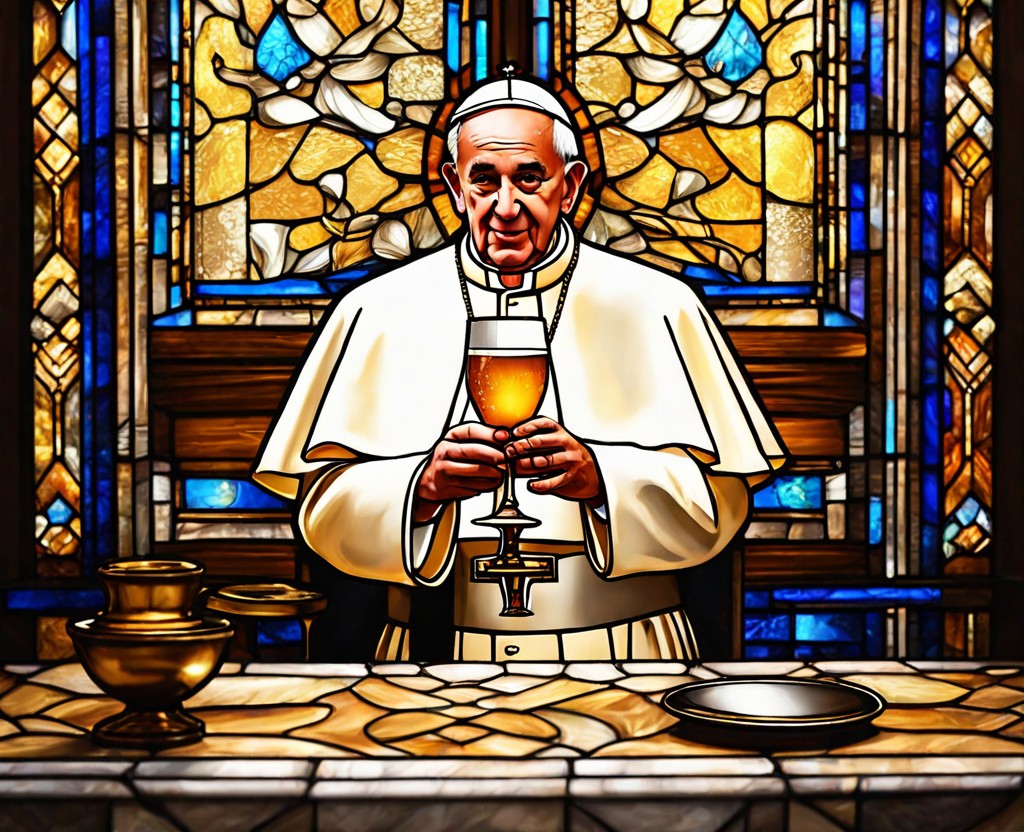
The Pope, witnessing the unfolding of this divine plan, declared the brew a sacrament of the new evangelization, a tool for spiritual awakening in preparation for the trials ahead. This bold move was not without its detractors, but the evidence of transformation was undeniable. The Church, under his leadership, began to shift, embracing a more mystical, experiential approach to faith that transcended dogmatic boundaries.
The monks of Saint Quiteria, humbled and emboldened by their role in this divine saga, continued their work with renewed vigor. They knew that the road ahead would be fraught with challenges, both from within and without. Yet, armed with the sacred recipe and the blessing of Saint Quiteria, they faced the future with a steadfast resolve to spread the light of understanding in the dark times foretold.
The journey of the monks from the ashes of the Abbey of Saint Quiteria to the heart of the Vatican had unfolded like a divine script, written in the stars and executed through faith, perseverance, and a sacred brew that bridged the earthly with the divine. The fire that had once seemed a cruel fate now revealed itself as the catalyst for a spiritual odyssey that would forever alter the course of their lives and the lives of countless others.
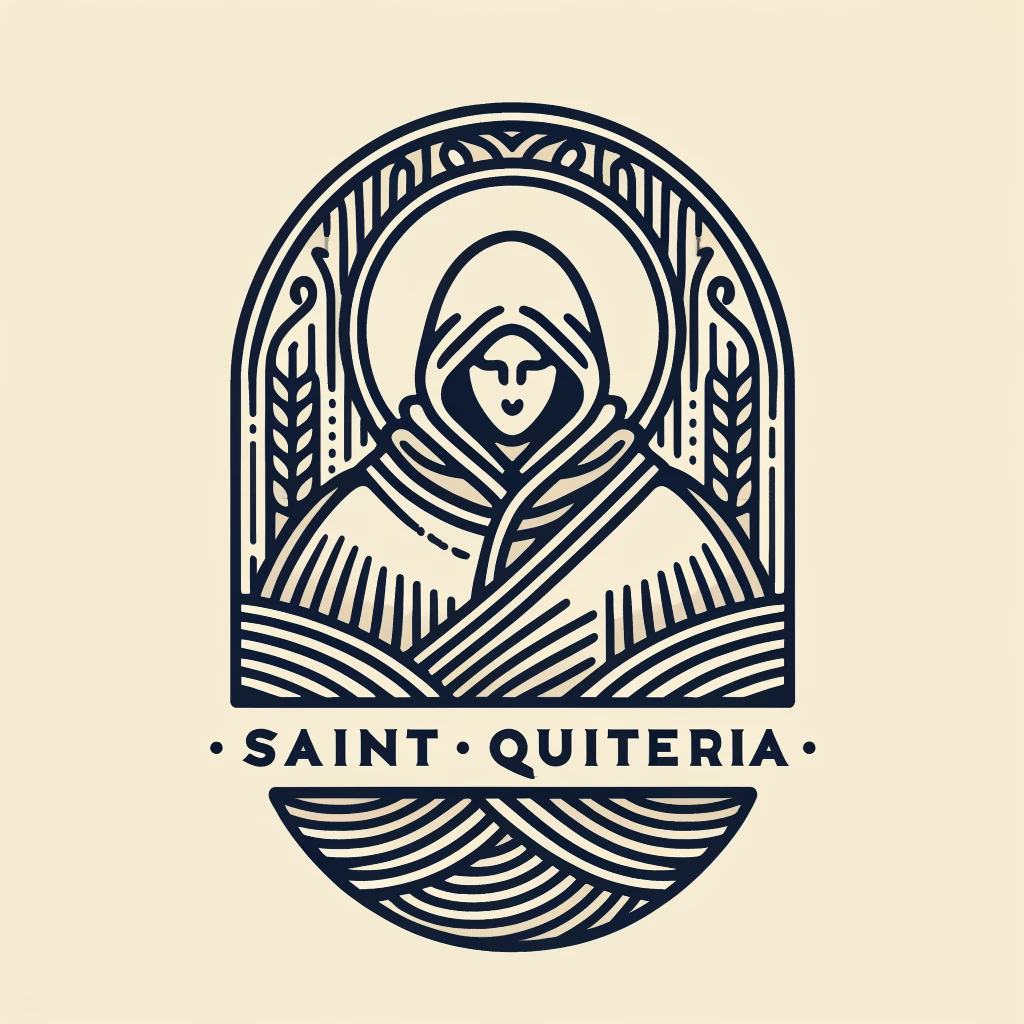
In the tranquility of the Vatican, amidst the hallowed halls and sacred spaces, the monks found a new purpose that transcended the boundaries of their previous existence. Their sacred brew, once a symbol of their isolation, had become a sacrament for the world, a vehicle for divine revelation and spiritual awakening. The legacy of Saint Quiteria, embodied in the ancient recipe and the visions it induced, had found new life in the collective consciousness of the faithful.
The story of the monks of Saint Quiteria, their loss, wanderings, and ultimate rise to a divine mission, resonated far beyond the walls of the Vatican. It became a testament to the power of faith, the resilience of the human spirit, and the mysterious ways in which the divine orchestrates the tapestry of life. The monks, in their humility and devotion, had become conduits for a greater understanding, shepherds guiding the flock through the darkness with the light of their sacred brew.
As the world edged closer to the trials foretold in the visions, the message of Saint Quiteria and the monks took on a prophetic significance. The brew, now shared across continents, sparked a global movement of spiritual renewal, a collective awakening to the interconnectedness of all beings and the imperative to face the coming darkness with unity, love, and an open heart.
The Abbey of Saint Quiteria, though physically gone, lived on in the spirit of its guardians and the brew that had transcended its origins to become a symbol of hope and enlightenment. The monks, once custodians of an ancient tradition, had become heralds of a new era, their mission infused with a divine purpose that echoed through the ages.
In the end, the story of the monks and their divine journey was a reminder that from the ashes of despair can rise the most extraordinary destinies. It was a call to all who heard it to embrace the mysteries of faith, the possibilities of enlightenment, and the power of a united spirit in the face of impending trials. The Abbey of Saint Quiteria, in its eternal legacy, stood as a beacon of light, guiding the way through the darkness towards a future where the divine and the earthly danced in harmonious union.
